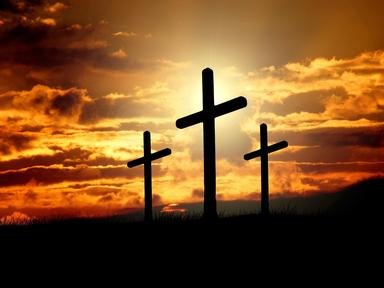Quiz Answer Key and Fun Facts
1. Luke, in his gospel, describes a number of women who traveled with Jesus. How does he describe their relationship to Jesus?
2. One of those named as following Jesus was Joanna and it is further recorded that her husband held a prominent role in Jewish society. Which of these elevated positions did he fill?
3. What is the name of the woman whom Luke describes as sitting "at the Lord's feet"?
4. Much has been written about Mary Magdalene but which of these pieces of personal information is actually recorded in the Bible?
5. Which of these women explicitly stated that Jesus was the Messiah?
6. Analysis of those women recorded as being present at Jesus' crucifixion has led to an interesting theory. This speculates that two of Jesus' disciples were, in fact, his first cousins. The theory centres on which of these pairs?
7. John's account of the crucifixion contains a Mary whose husband's name is very similar to that of the man to whom the risen Jesus reveals himself in Emmaus. What is the name of Mary's husband?
8. One of Paul's traveling companions was the son of a woman whose house was used as an HQ for the early Christians in Jerusalem. Who was this woman's son?
9. Female prophets are in evidence in the New Testament, just as they were in the Old. Paul, en route to Jerusalem, stayed at the Caesarea Philippi home of four prophetesses. These were the daughters of which evangelist, who shares a name with one of the apostles?
10. Which of these women is NOT mentioned in either the Gospels or the book of Acts?
Source: Author
glendathecat
This quiz was reviewed by FunTrivia editor
CellarDoor before going online.
Any errors found in FunTrivia content are routinely corrected through our feedback system.
